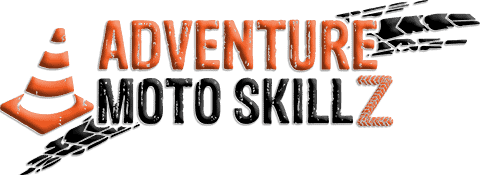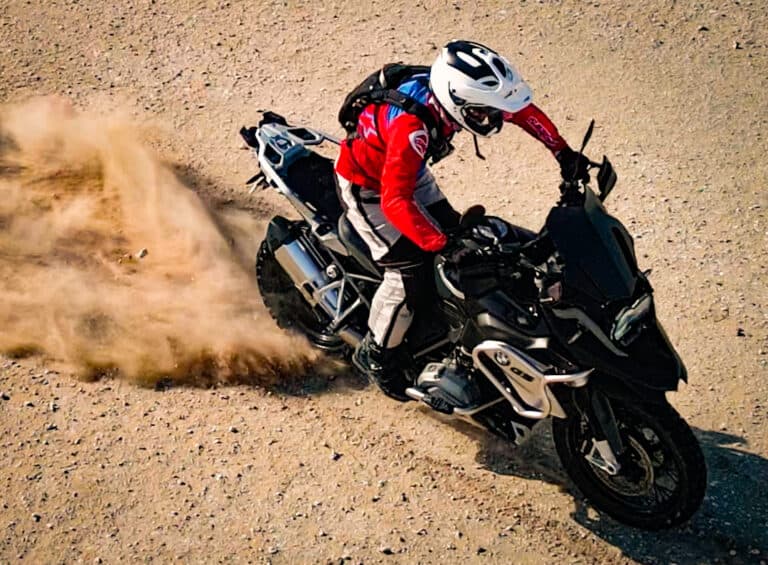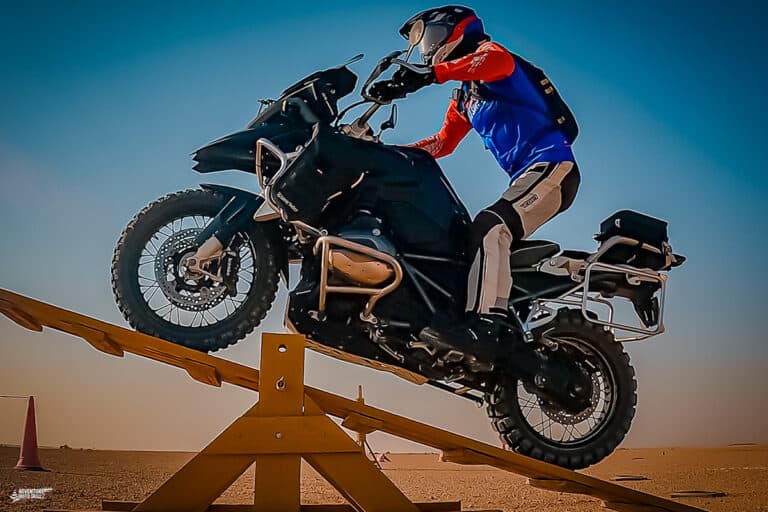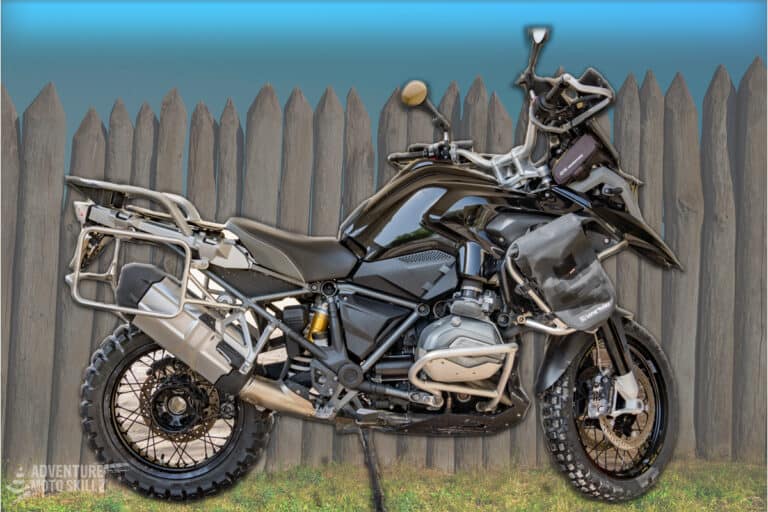Using Cowboy Mount on Your Motorcycle
The cowboy mount is a favorite of mine. I use it off-road on sinking and unlevel surfaces as well as on-road for ease and comfort.
The motorcycle cowboy mount, also known as the rolling start or pull-away mount, involves mounting your bike while in motion. It requires balance, momentum control, and the confidence to learn it.
If you’re an ADV rider who loves exploring new terrains on your motorcycle, mastering this mounting method will add versatility to your next ride. So, let’s get into it!
This post may contain Affiliate Links. Please see our Privacy & Disclosure Policy for more details.
Motorcycle Cowboy Mount Basics
So why do we need another way to mount the bike? As we explore off-road terrain, we often find ourselves in challenging situations such as sinking mud, shifting sands, or off-camber slopes. Sometimes we are recovering from a tipover, and the terrain is not ideal for a traditional re-mount.
Think of this as a rolling peg mount, allowing us to restart the bike without placing our full weight on it first. If you have ever remounted your bike in sinking mud or sand, you know the potential to dig that rear tire in and not go anywhere.
The Cowboy Mount technique is particularly beneficial in low traction environments where balance and momentum control are crucial. And it’s a great tool for riders who struggle to get both feet firmly planted on the ground.

Top-quality gear for your next adventure
Used and recommended by ADVMotoSkillZ
Mastering the Friction Zone
To perform an effective cowboy mount, understanding what’s known as the “friction zone” becomes vital. The term refers to that sweet spot on your clutch lever’s travel when power from your engine starts transferring to your rear wheel via transmission.
This point varies between motorcycles but typically lies somewhere around halfway through releasing your clutch lever. It can be felt when you begin letting go of the clutch and notice the forward movement of the bike without any throttle input.
Gaining mastery over clutch control enables riders to manage their bike’s momentum during a cowboy mount efficiently. To learn more about the friction zone, check out our post here.
Counterbalancing During Cowboy Mount
Besides managing momentum with accurate use of the friction zone, counterbalancing plays another key role in executing an efficient cowboy mount. Applying some throttle helps build up the necessary forward motion to help keep your motorcycle upright as you begin to put your body weight on one foot peg to mount the bike.
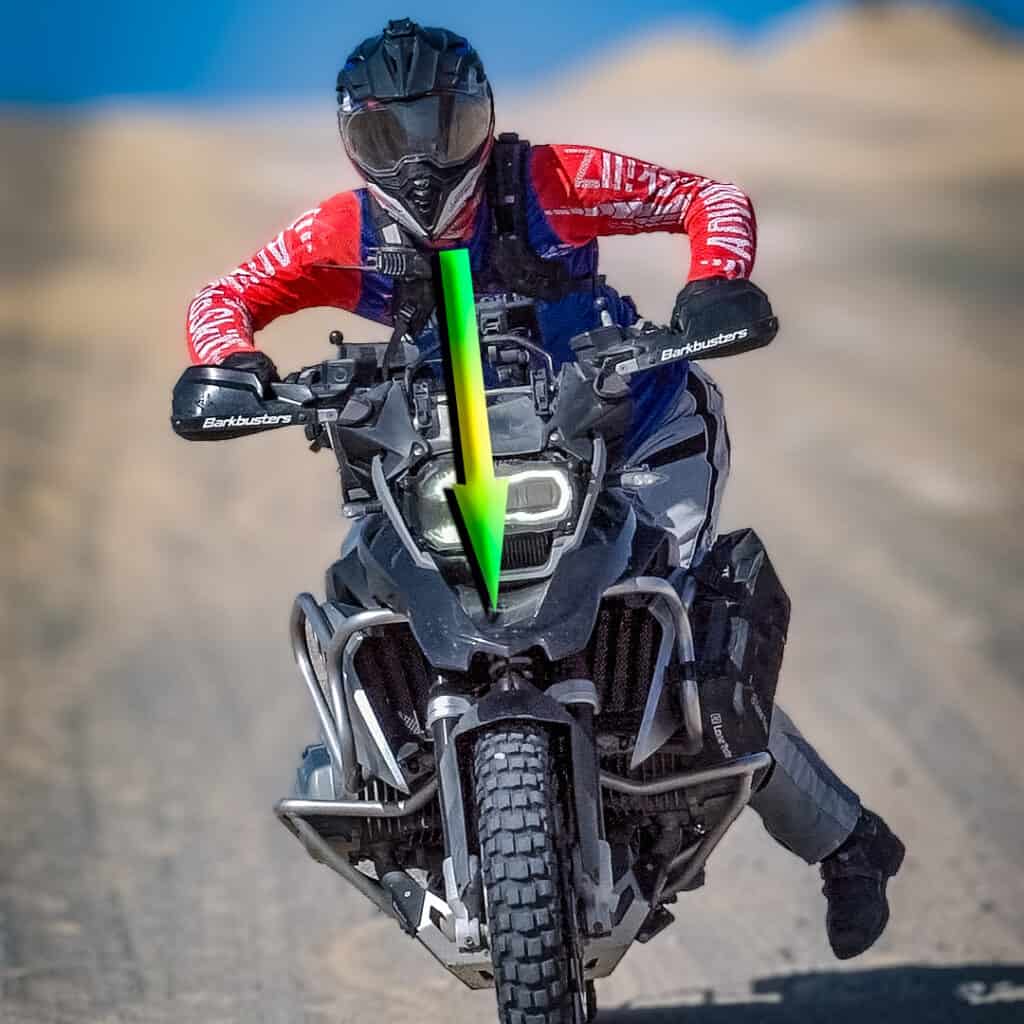
It’s essential to counterbalance the bike as the weight leans towards you when performing the cowboy mount. This is done by getting your torso over the bike’s centerline as quickly as possible.
As you embark on your off-road motorcycle riding journey, understanding the art of counterbalancing during a cowboy mount becomes crucial. This technique demands an intricate blend of weight distribution, friction zone, and throttle control to ensure stability.
This balance keeps your bike upright even when traversing uneven surfaces or executing sharp turns. Adding throttle at this stage helps build momentum for better maneuverability.
Maintaining Throttle Control: The Key Aspect
Throttle control forms an integral part of successful counterbalancing. Maintaining steady acceleration throughout ensures that neither too much nor too little power goes into maneuvering – both scenarios could lead to instability. Covering the front brake by keeping two fingers over the lever allows quick access if sudden deceleration or stopping is required.
TIP: The cowboy mount should be approached step by step. Cover the clutch and the brake, put your foot on the foot peg, and be prepared to counterbalance. Sometimes, it takes a few steps to gain enough momentum to mount properly, but with time, you’ll get smoother with the controls.
As with any skill, practice makes perfect. Your speed and fluidity will increase as you become more proficient, allowing for a seamless mount.
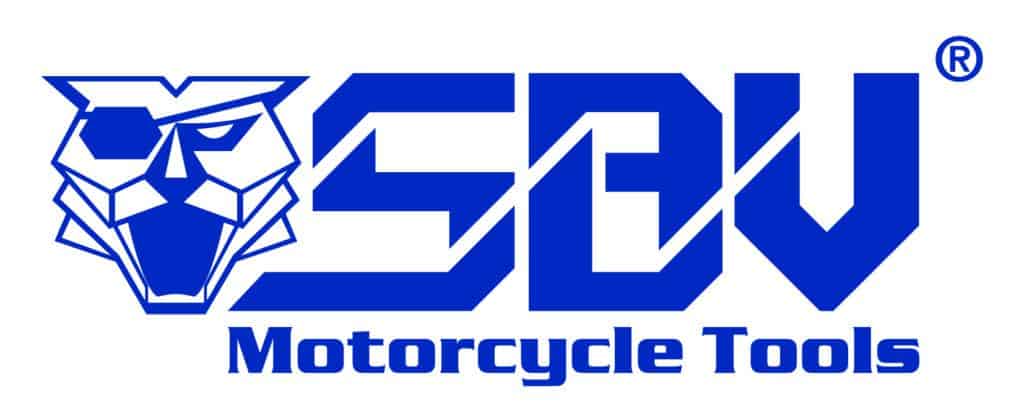
Innovative Motorcycle Tool Sets – Compact & Reliable
Used and recommended by ADVMotoSkillZ
Side Saddle Motorcycle Mount
Side saddle mount is another technique that off-road motorcycle riders can use, particularly when needing to move the bike a short distance.

Differences from cowboy mount: The main distinction between the two is that in the side saddle mount, your opposite foot starts on the foot peg. As you pull away on the bike, you can transition into a full mount by switching to the same side foot on the foot peg.
Practicing the side saddle mount technique:
- Stand on the left foot peg with your right foot
- Feather out the clutch and engage the throttle as needed, just like in the cowboy mount
- Once underway, side sit on the saddle
- Drive the bike a short distance and come to a stop
- We want to get a feel for the counterbalancing and momentum needed to be successful
Side Saddle Mount Transition: Transitioning between the inside and outside foot can be challenging. Before making the switch, ensure the bike has good momentum (approximately six to seven mph).
Deciding Between Cowboy Mount and Side Saddle Mount
A combination of factors often influences the choice between cowboy mount and side saddle mount. These include the rider’s body size, bike dimensions, as well as terrain conditions.
In addition to these considerations, your riding environment can significantly influence your decision between these two techniques. Sandy terrains, especially aerated sands churned by heavy vehicles, can be challenging for heavier bikes. The Cowboy Mount, when initiated in second gear, can be a life-saver here, ensuring the engine revs remain high and the journey continues seamlessly.
The cowboy mount and side saddle mount are not only practical but also add an element of fun to your ride. Whichever you choose, practice is key.
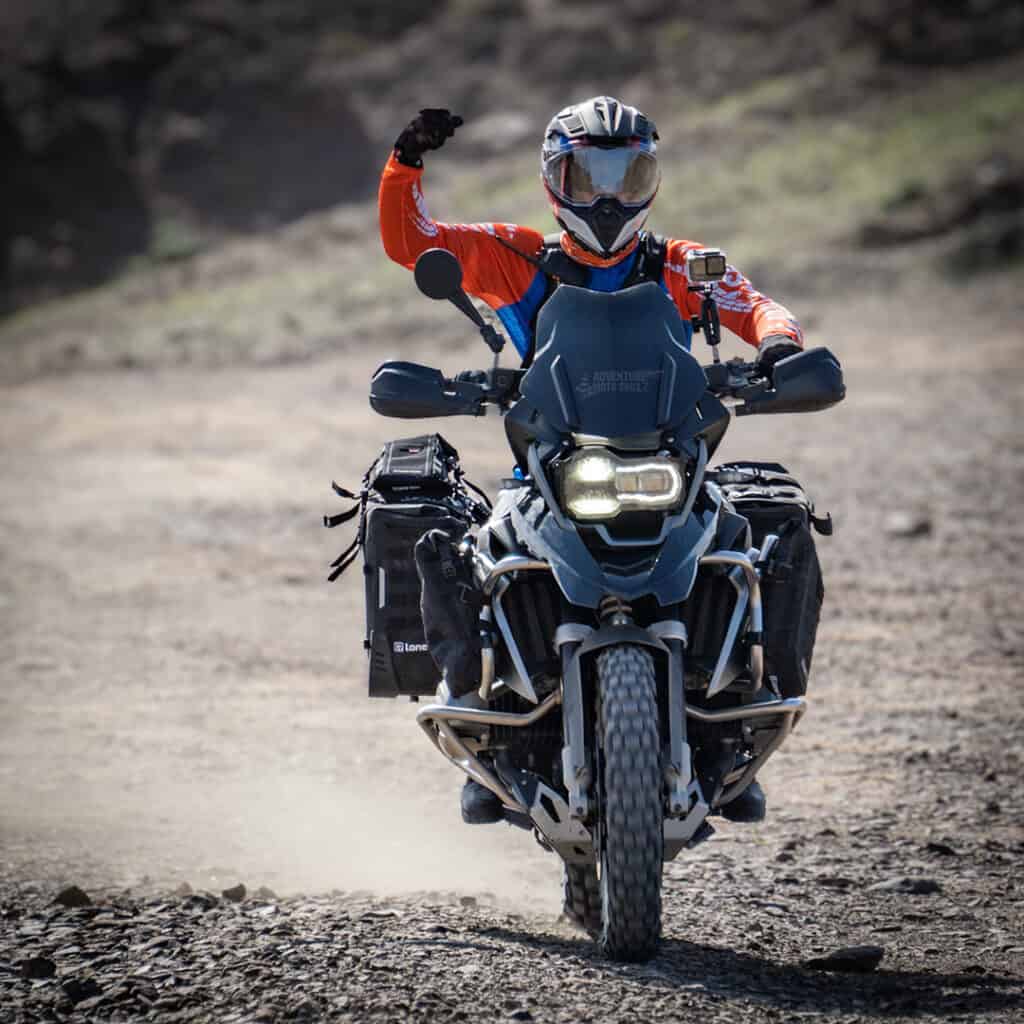
About the Author
Coach Mike is a Certified Off-Road Motorcycle Instructor & founder of ADVMotoSkillZ.
Riding tips from ADVMotoSkillZ reach thousands of international riders daily through social & blogs.
Click here to learn more about Mike’s motorcycle evolution from a Harley road rider to finding his true passion for off-road riding on a BMW 1200 GS.
If you would like to send Mike a quick message or invite him to provide training at your local facility, then visit the contact page here.
